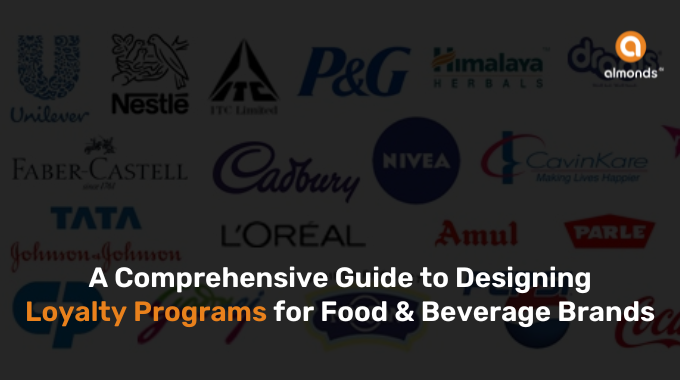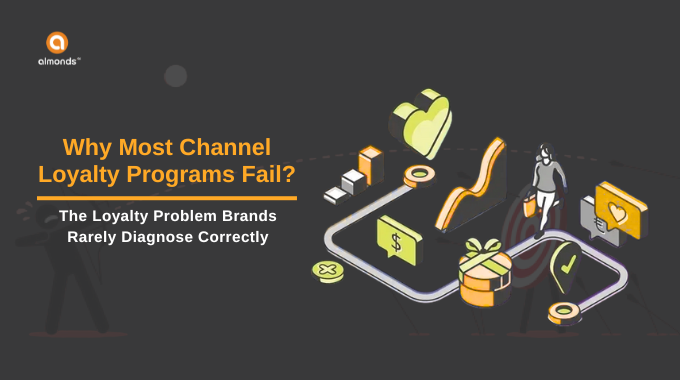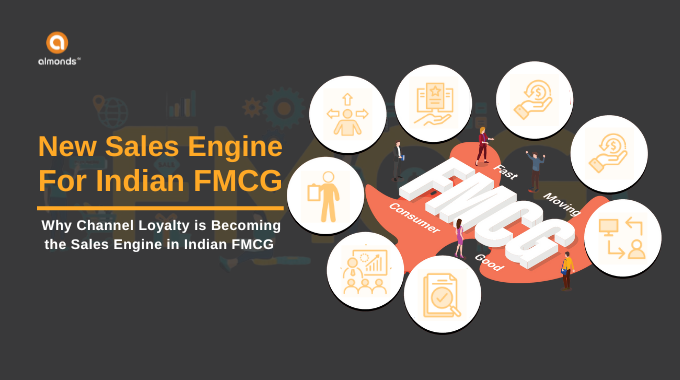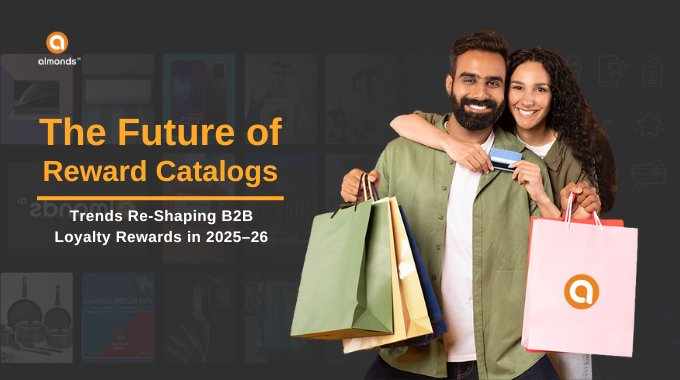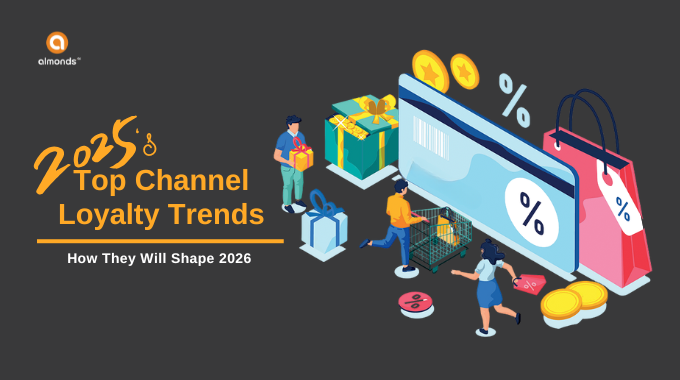The food and beverage (F&B) industry faces a fierce battle for customer loyalty. Consumers bombarded with choices crave not just good deals, but personalized experiences. Loyalty programs are no longer punch cards; they’re sophisticated tools offering valuable customer insights. Studies show personalized rewards and recognition are key – 91% of consumers favor brands with relevant offers.
This guide equips you to craft the perfect loyalty program for your F&B business. We’ll address unique challenges like high competition and evolving shopping habits. Loyalty programs can differentiate your brand, encourage repeat purchases, and build a community of loyal advocates who drive word-of-mouth recommendations – crucial in the F&B industry. Moreover, research by Bain & Company shows a 5% increase in customer retention rates can boost profits by 25-95%, highlighting the financial power of loyalty programs.
This guide unlocks the secrets to conquering the grocery aisle and building a thriving F&B business through customer loyalty.
What Is Grocery & Food and Beverage Loyalty Programs?
Food and beverage loyalty programs are ditching the traditional discount coupon playbook. Forget meager savings; customers crave free treats, complimentary delivery, and branded swag. Who wouldn’t love a stylish coffee mug or a surprise dessert with their order?
But here’s the surprising twist: groceries are also leading the charge in a new trend – paid loyalty memberships. While free programs are still popular, customers are increasingly willing to invest in premium options for even greater rewards. This opens the door for innovative subscription programs that unlock exclusive benefits.
So, how do you design a winning F&B loyalty program that keeps customers hooked? Three key ingredients are essential:
- Freedom of Choice: Empower your members!
Let them curate their rewards from a diverse menu of incentives. Think personalized recommendations, early access to new products, or even exclusive cooking classes. - Effort = Value: Make the most coveted rewards a little harder to reach. This gamifies the experience and motivates members to stay engaged. Think tiered membership structures with escalating rewards based on purchase frequency or participation.
- Omnichannel Experience: Seamlessness is king.
Whether customers order online, shop in-store, or use your mobile app, the loyalty and rewards program experience should be smooth and consistent across all platforms.
By focusing on these elements, you can craft an F&B loyalty program that’s more than just a points game. It becomes a personalized engagement platform that fosters brand loyalty, and drives repeat business. So, ditch the tired coupons and embrace the F&B loyalty revolution!
What Are Biggest Challenges for Groceries and Food & Beverage Brands in Terms of Customer Retention
The grocery and F&B industry faces several significant challenges when it comes to customer retention:
- High Competition: Consumers have a vast array of choices, with numerous grocery stores, online retailers, and meal delivery services vying for their business.
- Price Sensitivity: Grocery budgets are often tight, and customers are constantly on the lookout for the best deals. Discount grocery chains and private label brands put pressure on traditional retailers.
- Evolving Shopping Habits: The rise of online grocery shopping and meal kit delivery services disrupts traditional shopping patterns. Customers are increasingly turning to convenient, time-saving options.
- Lack of Personalization: Generic marketing and promotions fail to resonate with today’s consumers who crave a more personalized shopping experience.
- Data Privacy Concerns: Consumers are increasingly wary of sharing their personal data, making it difficult for brands to personalize the shopping experience and target loyalty rewards effectively.
- Brand Loyalty Erosion: With so many choices available, brand loyalty is becoming less of a factor for some consumers. They might be willing to switch brands based on convenience, price, or a specific promotion.
- Subscription Service Overload: Consumers are already juggling multiple subscriptions across various industries. Convincing them to sign up for another one, even for a grocery or F&B loyalty program, can be challenging.
- Short Attention Spans: In today’s fast-paced world, capturing and holding a customer’s attention is difficult. Loyalty programs need to be engaging and offer immediate benefits to keep members interested.
- Lack of Transparency: Opaque loyalty programs with complex reward structures or unclear redemption policies can frustrate customers and lead to program abandonment.
These challenges highlight the importance of effective loyalty programs. By providing targeted rewards, convenient features, and a sense of community, loyalty programs can help grocery and F&B brands overcome these hurdles and build lasting relationships with their customers.
Features of Top Loyalty Program for Groceries and Food & Beverage Brands
Now that you understand the landscape, let’s explore some key features that can make your grocery or F&B loyalty program stand out:
Personalized Rewards
Leverage customer data to offer targeted rewards and recommendations based on purchase history and preferences. This goes beyond simple points and can include personalized recipe suggestions, healthy product alternatives, or exclusive early access to new products. For example, leveraging data analytics, brands like Tesco Clubcard and Kroger Plus can offer personalized discounts and product recommendations tailored to individual shopping habits.

Flexible Earning Opportunities
Provide diverse ways for customers to earn rewards beyond just purchases. This could include signing up for your program, participating in surveys, engaging with your brand on social media, or attending cooking classes you host. Starbucks Rewards, for instance, allows members to earn points through purchases, referrals, and participating in special promotions.
Seamless Mobile Integration
In today’s mobile-first world, a user-friendly mobile app is essential. Your app should allow customers to easily track points, redeem rewards, access exclusive offers, and manage their account information. Apps like the Walmart App or Amazon Prime Now offer seamless integration of loyalty programs, making it easy for customers to engage and redeem rewards on the go.
Omnichannel Experience
Ensure a smooth and consistent experience across all channels, whether customers shop online, in-store, or through your mobile app. Points earned and rewards redeemed should be accessible and transferable across all platforms. Target’s REDcard loyalty program offers a consistent experience whether shopping online or in-store, ensuring customer satisfaction across all touchpoints.

Community Building
Foster a sense of community by creating a platform for members to connect, share recipes, or participate in cooking contests. This can be done through a dedicated app section, social media groups, or in-store events. Building a community fosters loyalty and keeps customers engaged with your brand beyond just transactions. Trader Joe’s excels in building a community feel through its engaging social media presence and in-store experience.
Partnerships
Collaborate with complementary brands to offer exclusive rewards or experiences. For example, partner with a local fitness center to offer discounts on classes for loyalty program members who purchase healthy groceries, or team up with a local cooking school to offer exclusive cooking classes for your members. Strategic partnerships can expand your reach and offer customers even more value. An example is Whole Foods Market’s partnership with Amazon Prime, offering discounts and exclusive deals to Prime members.
Gamification
Incorporate game mechanics like challenges, badges, or leaderboards to add a fun element and encourage customer participation. Weekly challenges to collect points for purchasing specific healthy items can motivate customers to make healthier choices, or recipe creation contests can drive engagement and generate user-created content. Programs like Chick-fil-A One use gamification to keep members engaged and motivated.

Final Words Before Starting the Preparation
Before diving into designing your loyalty program, it’s crucial to understand your target audience and define your program goals. Consider factors like customer demographics, shopping behaviors, and motivations. Do you want to increase customer acquisition, boost repeat business, or gather valuable data?
By understanding your audience and objectives, you can tailor your loyalty program to deliver the desired results and truly conquer the grocery aisle in the competitive F&B landscape.
Key Considerations for Designing a Winning Loyalty Program
- Reward Structures: Define how customers will earn and redeem points. Consider tiered rewards to encourage more engagement.
- Earning Opportunities: Offer multiple ways for customers to earn points, such as through purchases, social media engagement, or attending events.
- Seamless User Experience: Ensure the program is easy to use and accessible across all platforms, from mobile apps to in-store interactions.
- Personalization: Use data to tailor rewards and experiences to individual customer preferences.
- Marketing and Promotion: Regularly promote your loyalty program through various channels to keep it top of mind for customers.
By incorporating these elements, you can create a loyalty program that not only attracts and retains customers but also fosters a deeper connection with your brand, driving long-term success in the competitive grocery and F&B industry.
